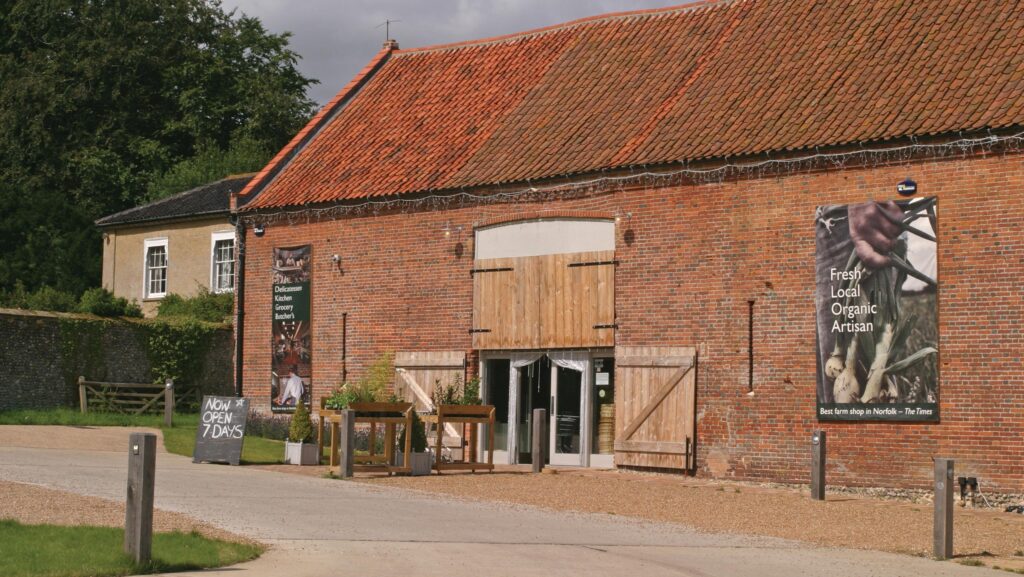Transition: Ways to generate non-farming income
 © Foodpix/Alamy Stock Photo
© Foodpix/Alamy Stock Photo Developing non-agricultural income is an increasingly important consideration for farm businesses.
And it doesn’t always have to come at the expense of food production, as speakers at a recent Farmers Weekly webinar explained
Farmers are under increasing pressure to adapt their businesses to achieve future financial security.
Diversification could help them to achieve this – but that doesn’t mean closing the farmgate. And there are a variety of options available.
At the webinar, Strutt & Parker land manager Kathryn Donkin advised farmers to look at the business as a whole and identify where there were opportunities to increase income.
See also: How to run a successful farm diversification
“There are two main areas of developing interest within diversification.
“One is renewable energy, like battery storage and solar farms, the other is landscape regeneration and natural capital,” she said.
Panel
Host Johann Tasker Transition Project editor was joined by four experts to discuss ways to generate non-farming income. He was joined by:
- Kathryn Donkin, land manager at Strutt and Parker
- Tim Oliver, managing director at Wanderlands
- Tim Foster, head of energy services at Conrad Energy
- Kit Speakman, Transition Farmerfrom Essex.
Energy
The energy opportunity was clear and present, said Tim Foster, head of energy services at Conrad Energy.
“There are always concerns around planning consent, but more pertinent is whether you can get grid connection, either for electricity or natural gas from anaerobic digestion,” he said.
There were also lots of opportunities for farmers to generate energy and use it themselves.
“That is perhaps the biggest opportunity, as you save on importing power and avoid the vagaries of high energy prices.”
Biodiversity net gain
Biodiversity net gain (BNG) is an area of significant potential, according to Tim Oliver, founder of Wanderlands.
“Any landowner should be looking at their holdings and identifying where the marginal land is,” he said.
“Where land is used for food production, that’s its primary purpose, but I don’t know any landowner that doesn’t have marginal land. That’s where they should focus to see what they can achieve in terms of natural capital.”
Policies for developers are different in each of the four countries of the UK.
The requirement in England is restitution of 110% of biodiversity lost as a result of the development, while Scotland, Wales and Northern Ireland are by negotiation.
“You have to think long term, because in many cases there are 30-year agreements and they have to be managed,” said Mr Oliver.
“The easiest ways to lift your biodiversity include widening field margins, planting wildflowers and putting hedgerows in.”
Proximity to developments was key, Ms Donkin added. “If you’ve got a farm next to a development site, then you could be in a perfect position to provide BNG offsetting,” she said.
Diversification didn’t have to replace good farming, said Mr Foster.
“Farming is for producing food and we have an island to feed. However, there is a real opportunity for UK farming to be rewarded for good practice.”
It can be difficult to know where to begin, but the Farming and Wildlife Advisory Group is a good place to start in terms of independent advice.
Utilising assets
Another option for generating new income is converting existing buildings deemed unsuitable for agricultural purposes into alternative uses.
Kit Speakman, a Farmers Weekly Transition farmer in Essex, has converted some of his outbuildings into office and leisure facilities.
“The planning system can be a complete lottery depending on whether you have a supportive council or not,” he said.
More than half of his income is now derived from diversification, although his passion will always be in farming.
This is a common situation across UK agriculture. “Some 21% of farmers receive over 50% of their income from diversification, which is a staggering number,” he said. “It all comes back to location, location, location.
“Labour availability is always an issue, as is accessibility. We’re really lucky that we are in the epicentre of four major towns.”
Diversification has allowed Mr Speakman to keep doing what he loves in a changing agricultural landscape.
“I have been farming for over 30 years and I still want to be able to enjoy doing it,” he said.
